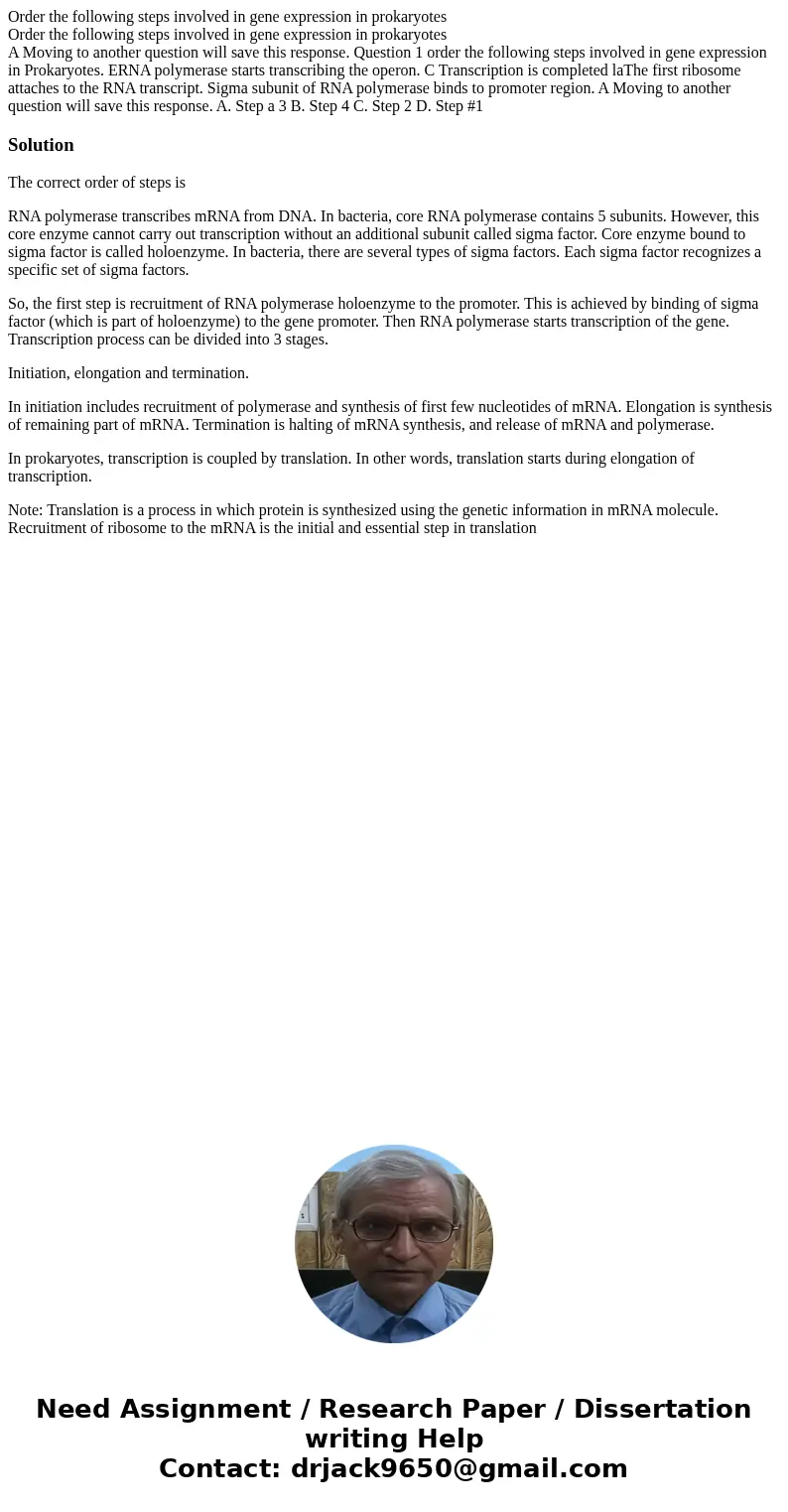Order the following steps involved in gene expression in pro
Solution
The correct order of steps is
RNA polymerase transcribes mRNA from DNA. In bacteria, core RNA polymerase contains 5 subunits. However, this core enzyme cannot carry out transcription without an additional subunit called sigma factor. Core enzyme bound to sigma factor is called holoenzyme. In bacteria, there are several types of sigma factors. Each sigma factor recognizes a specific set of sigma factors.
So, the first step is recruitment of RNA polymerase holoenzyme to the promoter. This is achieved by binding of sigma factor (which is part of holoenzyme) to the gene promoter. Then RNA polymerase starts transcription of the gene. Transcription process can be divided into 3 stages.
Initiation, elongation and termination.
In initiation includes recruitment of polymerase and synthesis of first few nucleotides of mRNA. Elongation is synthesis of remaining part of mRNA. Termination is halting of mRNA synthesis, and release of mRNA and polymerase.
In prokaryotes, transcription is coupled by translation. In other words, translation starts during elongation of transcription.
Note: Translation is a process in which protein is synthesized using the genetic information in mRNA molecule. Recruitment of ribosome to the mRNA is the initial and essential step in translation

 Homework Sourse
Homework Sourse